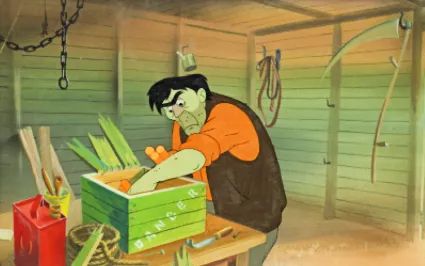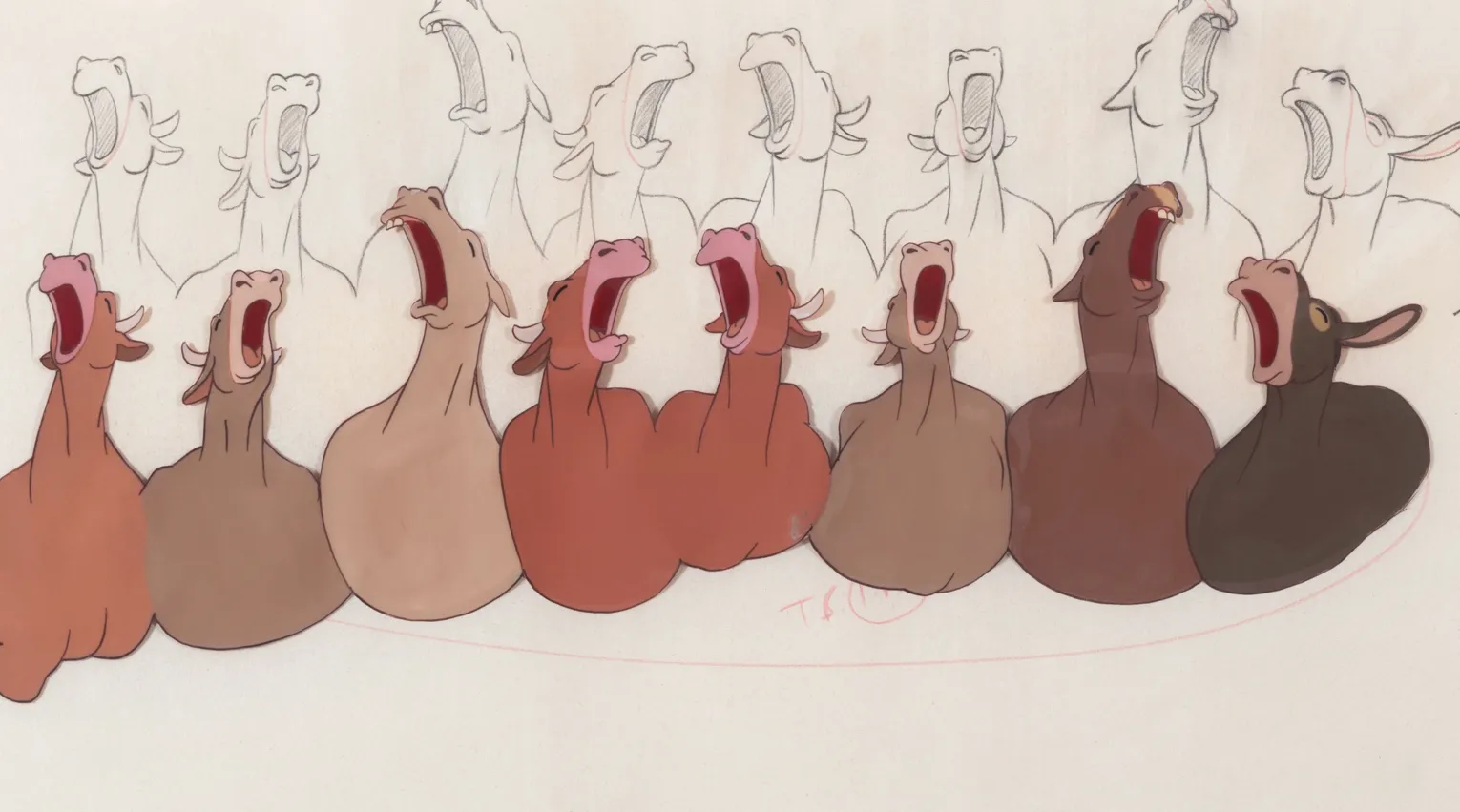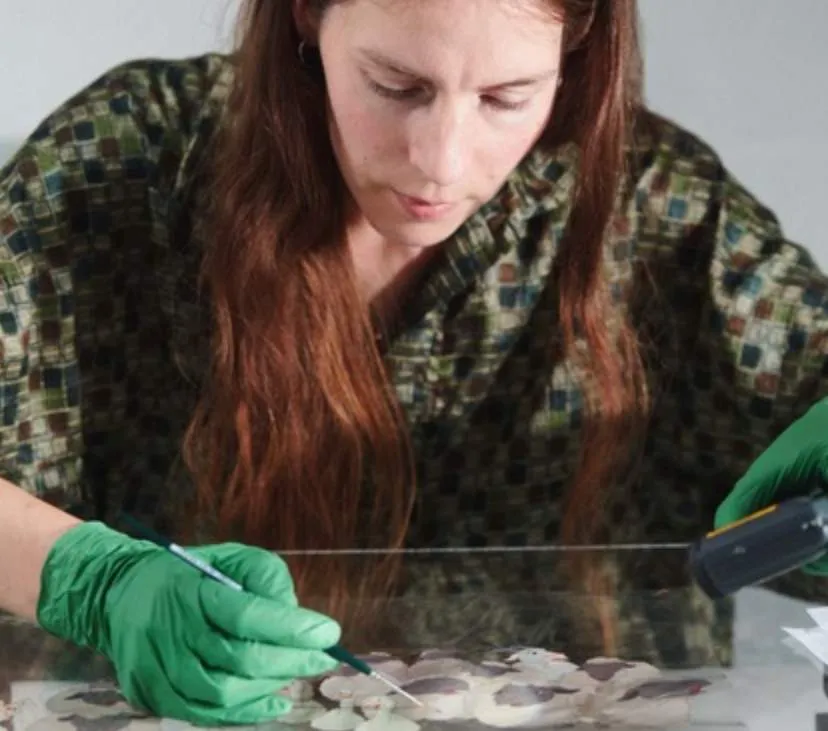Ink and Intrigue: Secrets of the Artisans Behind the Iconic Animal Farm Film
The adaptation of Orwell's Animal Farm (1954) into an animated film marked a departure from Disney's more homogenized propaganda. While adopting Disney's stylized graphic realism, the film introduced a new category of animation, addressing adult themes for mass appeal.

Bringing an animated film to life in the 1950s was no small feat, however. Animal Farm required 300,000 man-hours, 250,000 drawings, and more than 1,000 vividly-colored backgrounds. With 24 frames-per-second as the gold standard for film, animators needed to make minute adjustments to each frame to create a seamless movement on screen.
With every frame hand drawn and every illusion of movement created with painstaking precision, the animation process was incredibly time-consuming. Animal Farm not only stands as a testament to George Orwell's timeless tale but showcases the unique artistic choices of animators Halas & Batchelor that distinguish the film from its contemporaries.

Animal Farm: Behind the Scenes Secrets
Given the fledgling state of the British animation industry, Louis de Rochemont's choice of England as the production base was audacious. While no animation studio in the UK was truly prepared for such an ambitious project, the challenge was given to the celebrated animation studio of John Halas and Joy Batchelor (H&B). They were commissioned not only to deliver the UK's first full-length animated feature for commercial distribution, but the first animated film of its kind to delve deeply into a serious subject, vastly different in mood and message from the lighthearted Disney animations of the period.
Carien van Aubel, a conservator and researcher of modern and contemporary art, has extensively studied the artwork behind Animal Farm and the intricate methods of ‘50s hand-drawn animation: "There's a huge amount of drawings needed for each frame, as every character movement demands individual sketches."
"The brand new social experience where you activate your gaming skills as you train like a spy."
- TimeOut
Take on thrilling, high-energy espionage challenges across different game zones.


Animal Farm: A Laborious Task
The labor-intensive process was further complicated because each background, primarily rendered in watercolor on paper, remained consistent throughout a scene.
"Several animators would work on one specific task. The outlines are always drawn on the front by one person, and the characters are then painted on the reverse by another person,” van Aubel said, emphasizing the collaboration behind each frame.
Moreover, the cels, or transparent sheets used in animation, bore signatures, sequence numbers, and peg holes, reflecting the meticulous attention to detail in this period. "The animals often have their typical coat and skin colors, but there are variations for the more important characters. A clear contrast of the animals is created by placing them in front of the more washed colors of the background.”

Animal Farm: A balance of style and satire
The film's animation, characterized by its bold colors and simplified forms, was strategically designed to enhance Orwell's tale. The characters, drawn with thick, black outlines and human-like facial features, are intended to foster a connection with the audience.
"The facial expression of all the animals comes from human expressions. The animators used their own facial impressions by acting them out in front of the mirror and applied them to the animals," Van Aubel said. The backgrounds, with their flat, uncluttered aesthetic, serve to ensure the narrative's intricate messages stand out.
This film balances the simplicity of its visual style with the depth of its satire. The pared-back visual language is designed to guide viewers toward the political allegories, assisting the audience in navigating the layered narrative. Moments of lightness, marked by a pastel palette of animals set in quaint fields and barns, become even more poignant when juxtaposed with scenes that underscore the dark thematic undertones of Orwell’s story.

Humanizing the allegory
Symbolism and caricature are integral to the film's success. This is particularly evident in the portrayal of the pigs, who take over the farm to rule over the other animals. Their humanized features, as van Aubel points out, make their motives and emotions discernible.
A New York Times review from the period underscored how the pigs' animation, especially through the representation of Napoleon (an avatar for Joseph Stalin), encapsulated the essence of inhumanity and greed. The pigs’ ‘ponderous features and pompous movements’ reflected the narrative's satirical essence, starkly illuminating the sinister nature of authoritarian figures.
The film's legacy underscores the power of animation to communicate, captivate, and challenge audiences.
____________________
Own a Piece of Cold War Movie History! Dive into our collection of rare treasures from our film archives - original, hand-painted movie cels, perfectly paired with their original drawings. These extraordinary artifacts were pivotal in creating the 1954 animated classic Animal Farm, a cinematic gem financed by the CIA as a propaganda tool to fight communism during the intense Cold War period.
SPYSCAPE+

Join now to get True Spies episodes early and ad-free every week, plus subscriber-only Debriefs and Q&As to bring you closer to your favorite spies and stories from the show. You’ll also get our exclusive series The Razumov Files and The Great James Bond Car Robbery!


Gadgets & Gifts
Explore a world of secrets together. Navigate through interactive exhibits and missions to discover your spy roles.
Your Spy Skills
We all have valuable spy skills - your mission is to discover yours. See if you have what it takes to be a secret agent, with our authentic spy skills evaluation* developed by a former Head of Training at British Intelligence. It's FREE so share & compare with friends now!
* Find more information about the scientific methods behind the evaluation here.


Stay Connected
Follow us for the latest
TIKTOK
INSTAGRAM
X
FACEBOOK
YOUTUBE